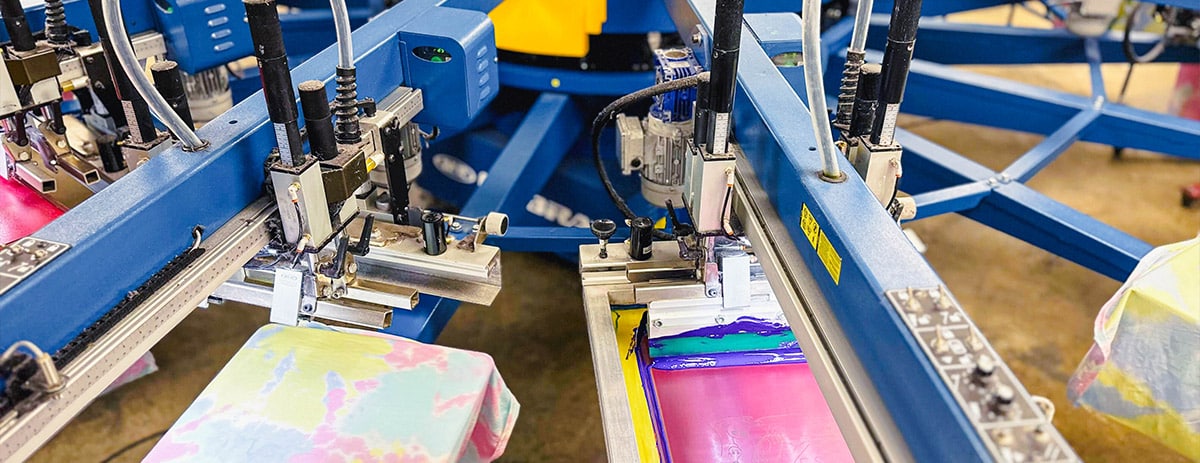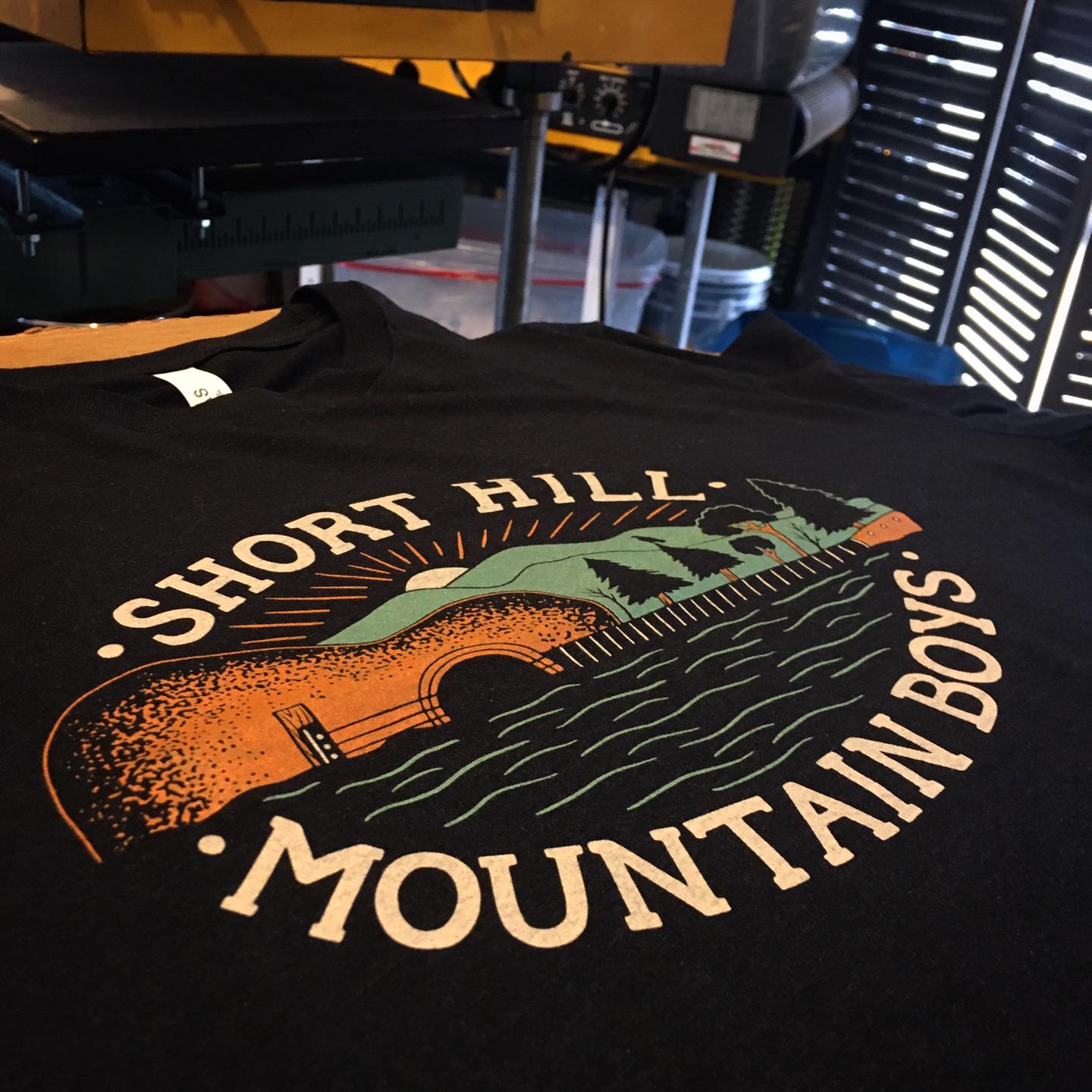Beginner-Friendly Screen Printing Kit for DIY Projects
Beginner-Friendly Screen Printing Kit for DIY Projects
Blog Article
The Ultimate Screen Printing Set: Important Tools for Successful Garment Printing
When it comes to screen printing, having the right devices can make all the distinction. What concerning the inks and displays? You'll soon discover just how these components work with each other to raise your printing game.
Comprehending Display Printing Basics
When you involve on your own in display printing, you'll discover it's both an art and a science. This method involves moving ink with a mesh screen onto fabric, developing vivid layouts. You'll start by preparing your screens, which needs using a light-sensitive emulsion. When dried, you reveal the display to UV light with your design positioned on top, permitting you to produce a stencil.
Next, you'll set up your printing station, straightening your screen with the garment. Using a squeegee, you'll press the ink through the display, ensuring also protection. The charm of display printing exists in its adaptability; whether you're publishing detailed patterns or vibrant graphics, the process continues to be the exact same.
As you practice, you'll find out about ink kinds, drying times, and shade blending. Each print is a chance to improve your strategy and share your creativity, making display publishing a fulfilling endeavor for anyone passionate concerning design.
Necessary Elements of the Screen Printing Set
To begin with display printing, you need to comprehend the vital elements of your kit. You'll desire to familiarize on your own with the basic equipment, the sorts of inks and solutions you'll utilize, and the tools for application. Each component plays a vital duty in attaining high-grade prints on your garments.
Standard Devices Overview
A well-appointed screen printing set is important for any person seeking to produce sensational garment styles. Begin with a strong screen printing structure, which holds your mesh tightly for precise printing. You'll also require a squeegee to push ink with the mesh onto your fabric. Do not fail to remember the direct exposure device or light resource, essential for transferring your layout onto the screen. A washout station helps you tidy screens after usage, guaranteeing they're prepared for your following job. Ultimately, spend in an enrollment system to line up several shades precisely. With these essential parts, you'll have a strong structure for your screen printing trip and can concentrate on bringing your innovative visions to life.
Emulsions and inks
After collecting the fundamental equipment, your following emphasis should be on inks and emulsions, which play an essential function in achieving lasting and vibrant prints. When picking inks, think about water-based, plastisol, or discharge inks based on the material type and desired finish. Water-based inks are green and soft on garments, while plastisol supplies resilience and bright shades.
Solutions, on the other hand, are important for developing your screens. They assist develop the pattern required for printing - custom screen printing. You'll intend to pick a top quality emulsion that fits your ink type and exposure approach. Keep in mind to store solutions and inks effectively to maintain their effectiveness. With the right selections, you'll set the structure for spectacular, professional-grade prints.
Devices for Application

Picking the Right Screens for Your Projects
When you're selecting screens for your tasks, the mesh count and structure product are vital variables to think about. A greater mesh matter is great for fine details, while the right frame material can boost toughness and stability. Recognizing these components will certainly help you attain the most effective outcomes in your display printing endeavors.
Screen Mesh Matter
Selecting the ideal screen mesh count is important to attaining the desired results in your screen printing tasks. The mesh count describes the variety of strings per inch in the screen, impacting how much ink gets transferred onto your garment. For in-depth layouts and fine lines, choose a higher mesh matter, commonly between 200 and 305. If you're functioning with thicker inks or strong layouts, a reduced mesh matter, around 110 to 160, will work much better. Always consider the kind of ink and fabric you're using, as these aspects influence the mesh count option. Trying out different counts can help you discover the excellent balance for your specific projects, making certain crisp, lively prints each time.
Frame Product Options
The screen structure material you select plays a considerable role in the high quality of your prints. You have actually got a few alternatives to assess, each with its advantages. Aluminum frames are light-weight, resilient, and immune to rust, making them best i loved this for long-lasting usage. They provide outstanding tension, making certain crisp prints. On the other hand, wood frameworks are much more standard and can be a lot more budget-friendly, however they're much heavier and might warp with time. You could prefer aluminum for its integrity if you're just beginning. For larger jobs, pick frames that can stand up to the stress needed for great information. Eventually, choose a material that suits your workflow and spending plan while guaranteeing your prints appear looking specialist and sharp.
Selecting Inks for Different Fabrics
Just how do you guarantee your screen printing layouts look lively and last on various textiles? Selecting the best ink is crucial. If you're printing on polyester or synthetic blends, take into consideration making use of plastisol inks.
Don't fail to remember regarding specialty inks like discharge or metallic inks. Release inks can get rid of color from textile, leaving a soft print, while metallic inks include a shiny finish that attracts attention. Always check your inks on the details textile prior to devoting to a huge run; this assists you assess shade vibrancy and resilience.
Lastly, bear in mind the material's weight and appearance. Picking the right ink for each and every fabric kind will guarantee that your layouts not just look wonderful however likewise withstand the examination of time.
The Value of Squeegees in Printing
Mops play an integral duty in achieving premium prints in display printing. They're your primary device for moving ink via the pattern onto the textile, and the right squeegee can make all the difference. When you apply constant pressure with a squeegee, you assure an also distribution of ink, lowering the possibilities of blotchy or uneven prints.
Choosing the ideal durometer or firmness of your squeegee is crucial, as it affects exactly how much ink is pulled via the mesh. A softer squeegee is terrific for detailed designs, while a stronger one functions well for bold graphics. Furthermore, the size of the squeegee should match your display size to optimize your printing process.
Taking time to understand your strategy with the squeegee will certainly bring about cleaner, sharper prints. So, don't undervalue this essential tool-- learn more about it, and you'll raise your screen printing video game.
Preparing Your Artwork and Solution
Achieving fantastic prints begins long before you pick up your squeegee. Confirm your artwork is high-resolution and formatted properly. Usage vector graphics for crisp lines and scalability. When you're helpful resources happy with the style, print it on openness film, remembering that the darker the picture, the better it blocks light during direct exposure.
Apply it uniformly to your screen in a poorly lit location to avoid premature direct exposure. Once your display is prepared, reveal it to UV light according to your emulsion's instructions (custom screen printing).
After rinsing the unexposed solution, allow the display dry completely. With your artwork and emulsion ready, you're set for the printing process!
Upkeep Tips for Resilient Tools
Although it may appear tedious, routine upkeep of your display printing devices can significantly expand their life expectancy and guarantee regular results. Begin by cleansing your displays quickly after use. Make use of a mild solvent to get rid of ink deposit; this helps stop accumulation that can mess up future prints. Shop your screens level to avoid bending, and keep them far from straight sunshine. custom screen printing.
For squeegees, wipe the blade after each usage to protect against ink from drying out on it. Consistently examine for nicks or damage and change them as required. Don't neglect your exposure system-- clean the glass surface routinely to confirm excellent light exposure.

Often Asked Questions
Can I Screen Print on Dark Colored Fabrics?
Yes, you can evaluate print on dark colored fabrics! Just make use of a proper opaque ink created for dark materials.
Just how Do I Tidy My Screens After Publishing?
To cleanse your displays after printing, you'll need a pressure washer or hose to remove excess ink. Utilize a screen cleaner or mild cleaning agent with a soft brush to scrub away deposit. Wash thoroughly.
What Safety Gear Do I Need While Display Printing?
When display printing, you'll need gloves to secure your hands, a mask to stay clear of breathing in fumes, and safety and security goggles to protect your eyes from chemicals and inks. Being cautious warranties a risk-free and satisfying experience.
Can I Make Use Of the Package for Other Products Besides Material?
Yes, you click this can make use of the package for other products besides material. It works well on surface areas like paper, wood, and plastic. Just make certain the ink and strategies suit the material you select.
How much time Does It Take for Ink to Treat?
Ink usually takes regarding 24 hours to heal fully, but it can vary based upon the type and density. You'll want to examine the supplier's guidelines for certain treating times to assure suitable outcomes.
Using a squeegee, you'll press the ink through the screen, making sure even insurance coverage. You'll require a dependable squeegee, which aids evenly distribute ink throughout your display.Picking the right display mesh matter is important to accomplishing the desired results in your display printing tasks. The mesh count refers to the number of strings per inch in the display, affecting how much ink gets moved onto your garment.To clean your displays after printing, you'll need a stress washer or hose pipe to eliminate excess ink.
Report this page